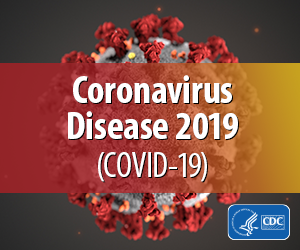To Close or not to Close?
How a temporary closing to stop the spread of coronavirus could affect us all
March 11, 2020
Just a few weeks ago, the coronavirus seemed like a small blip in the Asian health system – it was a vague concern for Americans. Teenagers were joking about how it will lead to “the next apocalypse,” killing the human race. Now, the danger is so much more real.
Since last week, New York has entered a state of emergency to try to prevent the transmission of the virus, which has already been confirmed in 173 individuals throughout the state as of March 11. Connecticut, its close neighbor, had its first confirmed case in Wilton this weekend. Although tnumbers of confirmed cases are still in single digits in the state, Connecticut schools have already begun taking precautions in response to the confirmation.
On March 10, Stamford Public Schools announced a ban on events likely to draw a crowd of over 100 spectators. Wilton Public Schools have cancelled all “unnecessary after school gatherings” to avoid possible transmission. New Canaan Public Schools had a delayed opening this Monday to give teachers time to prepare for a “distanced learning” system, where kids will be learning from home as schools close down. Norwalk Public Schools is planning to close all schools on Thursday to allow teachers an entire day to prepare.
With the proximity of these districts, it makes a student wonder: is Stamford next to close? There has already been talk about sanitation and cleanliness – thankfully – but no clear answer on whether or not we should expect a complete shutdown of schools.
Here is what will happen we are forced to temporarily close:
The most obvious benefit from adopting a distanced learning approach throughout the school district would be the health benefits it has. Thousands of students will no longer be forced to reside in germ-ridden buildings on a daily basis, which would decrease the chances of the virus spreading through the school population and potentially reaching more vulnerable people like the sick and elderly.
Despite its good intent, it is difficult to ignore how significant of a measure shutting down the entire school district is. Most worrisome is the effect it will have on education. Will the “distanced learning” curriculum be sufficient? Are the teachers really getting enough time to prepare? Just today I heard a teacher mention that she will be finding “the most random packets” for her students to do due to the lack of time and resources she has. For younger students in elementary schools, they could be missing out on needed guidance that would help them truly grasp concepts that are the foundation of their entire education. For high schoolers, class time is vital to maintain grades and learn content that will appear on rigorous Advanced Placement, International Baccalaureate, and standardized exams. If the distanced learning is not adequate, it could turn acceptances to rejections for students who are looking to attend extremely competitive universities.
Other than education, the closure of schools would unfortunately mean an end to all after school activities, whether they involve spectators or not. Norwalk High School announced yesterday that they will be ending their winter percussion and winter guard programs for the season, despite their recent success in local competitions. Furthermore, Norwalk’s spring concert and their spring drama production of Willy Wonka have all been cancelled as well.
In terms of sports, it was just announced that the Connecticut Interscholastic Athletic Conference will cancel all remaining winter games, including the state tournaments, due to the virus. Discontentment from athletes and spectators alike resulted in a change.org petition advocating for the continuation of the sports games without any spectators; it has over 70,000 signatures as of March 11.
In the long run, the closure of schools would mean a stop to the preparation that other sports teams have been doing for the upcoming spring season, which could perhaps negatively affect their performance later on.
To some these may seem like necessary precautions, but to students who have spent countless hours working and preparing for these programs, it is extremely heartbreaking.
Overall, the distanced learning approach seems like it is likely to happen, especially when considering the proximity of the schools that are making the decision to do so. It will help with prevention of germ and coronavirus spread, but it will also have heavy implications on school functions as a whole. So is it necessary? Probably. Hand sanitizer cannot fix everything. But will it be without any implications? Definitely not. Students all throughout the Stamford Public Schools district will just have to deal with it, it seems




